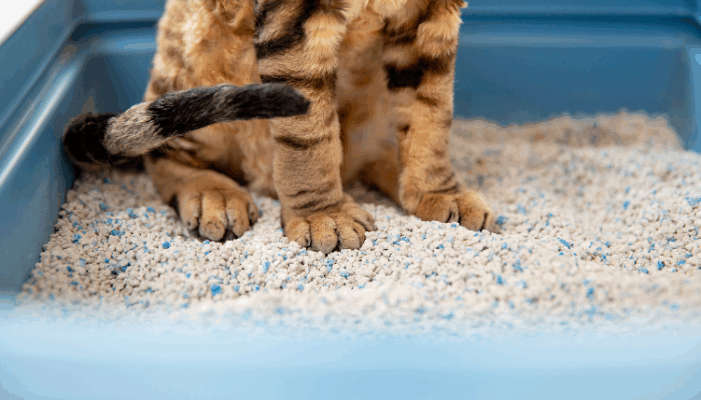Cats get surrendered each year because of litterbox problems. We sympathize with both the cats and the people; no one wants a cat thinking (of their bathroom) outside the box! Litterbox issues can often leave cat guardians feeling helpless and upset with their cat. The first thought might be that the cat is lashing out or “getting back” at their owner for something, but it’s almost always something that we can identify and treat.
The first place to check is with your veterinarian. They can take blood and urine samples and look your cat over for any pain or mobility issues that might be causing the litterbox issues. Something as seemingly unrelated as dental pain can cause accidents! An exam from the tip of the tail all the way to the tip of the nose can help resolve a litterbox problem.
After that, consider how many litterboxes you have, where they are in the home, and how often they’re being cleaned.
- If you have multiple cats in the home, you’ll need one litterbox per cat, plus one. (ex: 3 Cats = 4 litterboxes)
- Spread the boxes throughout the home to ensure that each of your cats can find a litterbox when they need one.
Covered litterboxes, using unfamiliar litter, or using electronic litterboxes can also cause issues.
- What kind of litter are you using?
- Are your boxes big enough for your cat? Is the entry appropriate for their level of mobility?
- Are the litterboxes in an area that is hard or scary for your cat to go to? Basements and laundry rooms are popular locations for litterboxes, but can be scary, damp, or hard to get to.
Evaluate the stress levels of your home. Resolving household stress can go a long way to resolving litterbox issues.
- Is your cat getting along with the people and other animals in the home?
- Is there a new stressor in the home? Other cats outside where they can see them? Squirrels or birds? These things can be stressful for some cats.
- If you have a multi cat home, making sure that all resources are bountiful is important. Provide plenty of feeding stations, resting areas, hiding spots, vertical space, and scratching surfaces.
For more on working through litterbox issues, check out this fantastic information from Pamela Johnson-Bennett, author of multiple books on cat behavior. Cat-astrophe averted!







